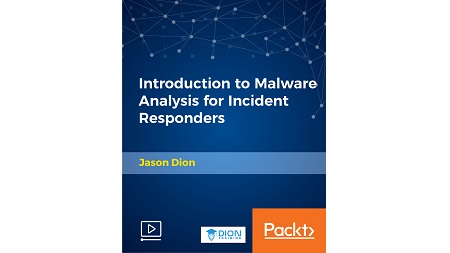
English | MP4 | AVC 1920×1080 | AAC 48KHz 2ch | 1h 31m | 419 MB
Increase your cybersecurity capability by learning to perform dynamic and static malware analysis!
Nearly every incident response that occurs in the cyber security field comes back to the initial intrusion vector: malware. In this course, you will learn about the various types and categories of malware, their symptoms, and how they work. As an incident responder, it is imperative that you understand the symptoms of malware, but more importantly that you are able to understand what that malware is doing, and quickly. So, if you have ever wondered how to better understand malware, this is the course for you!
In this course, you will learn how to perform the basics of dynamic malware analysis, a tried and true method of understanding what an unknown binary (malware) is doing on an infected system.
What You Will Learn
- You will understand the steps and processes involved in static and dynamic malware analysis.
- You will be able to perform basic dynamic malware analysis.
- You will understand the various types of malware found in the wild
Table of Contents
Introduction
1 Welcome to the Course
Malware Concepts – Building a solid foundation upon which to learn
2 What is Malware
3 Symptoms and Activities
4 Types of Malware
5 Infection Vectors
Malware Analysis – Foundational concepts before begin working with malware
6 Malware Analysis Overview and Types
7 Static Analysis
8 Dynamic Analysis
Setting Up the Analysis Environment (FlareVM)
9 Install Virtual Box
10 Install Windows 10
11 Download and Install FlareVM
12 Creating a Snapshot of a the Clean FlareVM
13 Disabling the Firewall and Antivirus
Conducting the Analysis
14 Attempting Static Analysis with Floss
15 Beginning Dynamic Analysis with Autoruns
16 Investigating the Scheduled Task
17 Packet Analysis with Wireshark and Process Monitoring
18 Files and Folders Created
19 Static Analysis with Ida and OllyDbg
20 Static Analysis with Process Dump
21 Open Source Research
Conclusion
22 Conclusion
Resolve the captcha to access the links!